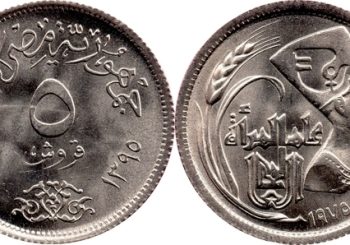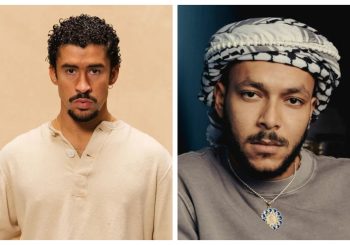Illustration is one of the cornerstones of Instagram, featuring motivational comics, drawings of public figures, educational graphics and more. The medium is used to integrate visuals in text-based content across disciplines, from activism to mental health platforms and fictional stories. In the region, attention is frequently diverted away from art; it is often underrated, so EgyptianStreets is highlighting five talented female illustrators from the Middle East that share their work online and call for a sort of social change in their creations.
1. Nour Flayhan
Nour Flayhan tackles topics from the Lebanese revolution to personal visual diary entries to profiles of significant personalities in very recent history. Among those represented are black people in the U.S. tragically shot by police, protesters, Egyptian icons of LGBT solidarity, and icons of representation of the Middle East in the West. The Lebanese artist recently partnered with Gucci Beauty creating illustrations representing Arab women’s beauty against traditional standards of the West. According to an interview with Grazia ME, her series was made in hopes to “use poetry to spread warmth and hope in others”.
2. Rama Duwaji
Rama Duwaji is a Syrian artist based between Dubai and Washington DC. Her work revolves around the diaspora experience and misogyny in communities of color.
Her most recent project was illustrating the video for called “Mesh Hastanna“, a song by Felukah, Egyptian hip-hop artist, in collaboration with global Islamic feminist movement Musawah. The song calls for equality and justice in regards to family laws for women living in Muslim communities. Aside from commissions, Duwaji creates graphic novels targeted at Arab children. Her work is often published in the UK’s Galdem online magazine.
3. Deena Mohamed
Deena Mohamed is an Egyptian comic artist based in Cairo. She has published two graphic novels in Arabic so far, with their translations coming next year. ES spoke with her earlier this year about Shubeik Lubeik, her graphic novel trilogy about a world where wishes can be bought and used. The novels speak of mental health, specifically depression, and addresses its stigma in Egyptian society. She also includes crafted satire on the issue of classism that is omnipresent in Cairo’s culture.
Her career in comics began with a Tumblr webcomic called Qahera, where the titular main character is a Muslim superwoman who combats political and social issues. Mohamed often works on a variety of commissioned illustrations, such as the Google Doodle for Mufidah AbdulRahman or a comic series with HarassMap, a technology non-profit initiative combating harassment, about consent.
4. Sheyam Ghieth
Sheyam Gheith is an Egyptian-American graphic designer likely most known from her work on Ramy, Egyptian-American Golden Globe-winning comedian Ramy Youssef’s Hulu TV series.
Ghieth is the artist responsible for the typographic English and Arabic visuals seen in the intros and outros. She also creates typographic art on her Instagram featuring simple statements varying from humor, motivational posts and art supporting the queer community.
5. Mona Chalabi
Mona Chalabi is a British visual and data journalist of Iraqi descent. She actively creates statistic-driven visual pieces on her Instagram profile depicting current political situations in the U.S. and worldwide.
She illustrates topics from American police brutality to systemic racism and mental health. She has also recently created instructional illustrations providing information on COVID-19 and its symptoms. She has been featured in The New Yorker, The New York Times and multiple more publications.






Comment (1)
[…] the #MeToo movement through ‘Assault Police’ as well as bring to the forefront other talented female illustrators from the Middle East that call for social […]